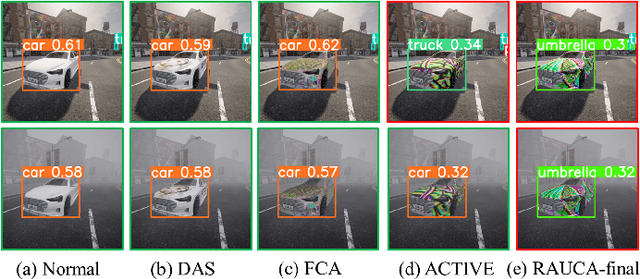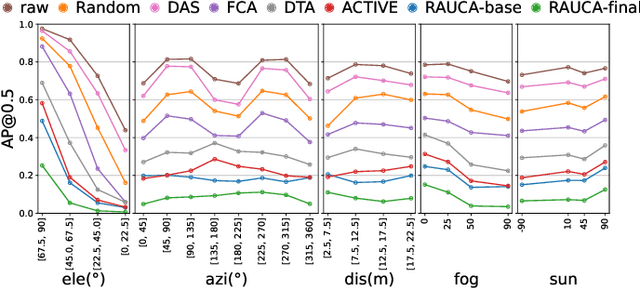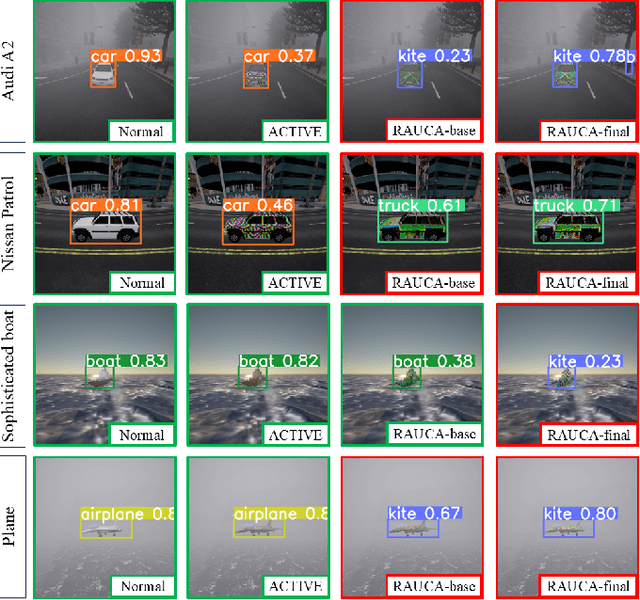Linye Lyu
SafeMVDrive: Multi-view Safety-Critical Driving Video Synthesis in the Real World Domain
May 23, 2025



Abstract:Safety-critical scenarios are rare yet pivotal for evaluating and enhancing the robustness of autonomous driving systems. While existing methods generate safety-critical driving trajectories, simulations, or single-view videos, they fall short of meeting the demands of advanced end-to-end autonomous systems (E2E AD), which require real-world, multi-view video data. To bridge this gap, we introduce SafeMVDrive, the first framework designed to generate high-quality, safety-critical, multi-view driving videos grounded in real-world domains. SafeMVDrive strategically integrates a safety-critical trajectory generator with an advanced multi-view video generator. To tackle the challenges inherent in this integration, we first enhance scene understanding ability of the trajectory generator by incorporating visual context -- which is previously unavailable to such generator -- and leveraging a GRPO-finetuned vision-language model to achieve more realistic and context-aware trajectory generation. Second, recognizing that existing multi-view video generators struggle to render realistic collision events, we introduce a two-stage, controllable trajectory generation mechanism that produces collision-evasion trajectories, ensuring both video quality and safety-critical fidelity. Finally, we employ a diffusion-based multi-view video generator to synthesize high-quality safety-critical driving videos from the generated trajectories. Experiments conducted on an E2E AD planner demonstrate a significant increase in collision rate when tested with our generated data, validating the effectiveness of SafeMVDrive in stress-testing planning modules. Our code, examples, and datasets are publicly available at: https://zhoujiawei3.github.io/SafeMVDrive/.
Toward Robust and Accurate Adversarial Camouflage Generation against Vehicle Detectors
Nov 15, 2024



Abstract:Adversarial camouflage is a widely used physical attack against vehicle detectors for its superiority in multi-view attack performance. One promising approach involves using differentiable neural renderers to facilitate adversarial camouflage optimization through gradient back-propagation. However, existing methods often struggle to capture environmental characteristics during the rendering process or produce adversarial textures that can precisely map to the target vehicle. Moreover, these approaches neglect diverse weather conditions, reducing the efficacy of generated camouflage across varying weather scenarios. To tackle these challenges, we propose a robust and accurate camouflage generation method, namely RAUCA. The core of RAUCA is a novel neural rendering component, End-to-End Neural Renderer Plus (E2E-NRP), which can accurately optimize and project vehicle textures and render images with environmental characteristics such as lighting and weather. In addition, we integrate a multi-weather dataset for camouflage generation, leveraging the E2E-NRP to enhance the attack robustness. Experimental results on six popular object detectors show that RAUCA-final outperforms existing methods in both simulation and real-world settings.
CNCA: Toward Customizable and Natural Generation of Adversarial Camouflage for Vehicle Detectors
Sep 26, 2024



Abstract:Prior works on physical adversarial camouflage against vehicle detectors mainly focus on the effectiveness and robustness of the attack. The current most successful methods optimize 3D vehicle texture at a pixel level. However, this results in conspicuous and attention-grabbing patterns in the generated camouflage, which humans can easily identify. To address this issue, we propose a Customizable and Natural Camouflage Attack (CNCA) method by leveraging an off-the-shelf pre-trained diffusion model. By sampling the optimal texture image from the diffusion model with a user-specific text prompt, our method can generate natural and customizable adversarial camouflage while maintaining high attack performance. With extensive experiments on the digital and physical worlds and user studies, the results demonstrate that our proposed method can generate significantly more natural-looking camouflage than the state-of-the-art baselines while achieving competitive attack performance. Our code is available at \href{https://anonymous.4open.science/r/CNCA-1D54}{https://anonymous.4open.science/r/CNCA-1D54}
RAUCA: A Novel Physical Adversarial Attack on Vehicle Detectors via Robust and Accurate Camouflage Generation
Feb 24, 2024



Abstract:Adversarial camouflage is a widely used physical attack against vehicle detectors for its superiority in multi-view attack performance. One promising approach involves using differentiable neural renderers to facilitate adversarial camouflage optimization through gradient back-propagation. However, existing methods often struggle to capture environmental characteristics during the rendering process or produce adversarial textures that can precisely map to the target vehicle, resulting in suboptimal attack performance. Moreover, these approaches neglect diverse weather conditions, reducing the efficacy of generated camouflage across varying weather scenarios. To tackle these challenges, we propose a robust and accurate camouflage generation method, namely RAUCA. The core of RAUCA is a novel neural rendering component, Neural Renderer Plus (NRP), which can accurately project vehicle textures and render images with environmental characteristics such as lighting and weather. In addition, we integrate a multi-weather dataset for camouflage generation, leveraging the NRP to enhance the attack robustness. Experimental results on six popular object detectors show that RAUCA consistently outperforms existing methods in both simulation and real-world settings.
 Add to Chrome
Add to Chrome Add to Firefox
Add to Firefox Add to Edge
Add to Edge